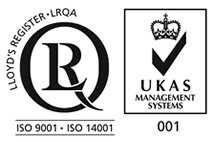
Main Products
Copyright 1998-2025 Firmetal Group All Rights Reserved. | Sitemap
Vanadium-titanium-based hydrogen storage alloys have the advantages of large hydrogen storage capacity at room temperature and fast hydrogen absorption and release speed. They have been applied in fields such as hydrogen storage, purification, compression, and hydrogen isotope separation, and have broad application prospects in areas such as fuel cell vehicle-mounted, thermal energy storage and transportation, and thermal energy and mechanical energy conversion. At present, vanadium-titanium-based hydrogen storage alloys are usually prepared by smelting. However, the melting points of the main raw materials of vanadium-titanium-based hydrogen storage alloys, namely vanadium-iron master alloy, metal Cr, and sponge Ti, are as high as 1800℃, 1857℃, and 1668℃ respectively, and the melting point of the alloy is also around 1600℃. What's more serious is that V and Ti have very high activity at high temperatures. When melting, it is prone to react with the main components of the crucible such as alumina, magnesium oxide and zirconia, leading to alloy contamination and crucible damage.
In view of the existing problems in the current preparation process of vanadium-titanium-based hydrogen storage alloys, a highly uniform vanadium-titanium-based hydrogen storage alloy and its preparation method are provided. The present invention adopts vacuum induction suspension melting technology and makes improvements on the original melting technology. The improved process not only avoids the problems such as severe alloy burnout and crucible corrosion caused by the high melting temperature of the alloy in the conventional melting method, but also has an alloy purification function in the preparation process. The prepared alloy is a high-purity alloy, which can effectively inhibit macroscopic composition segregation. It not only overcomes the shortcomings of vacuum induction suspension melting technology itself, but also solves the defects existing in conventional melting methods.
By adopting vacuum induction suspension melting technology to prepare vanadium-titanium-based hydrogen storage alloys, especially using water-cooled copper crucibles for melting, the problem of the reaction between the crucible and active metals existing in conventional melting methods has been first solved, avoiding a series of technical difficulties. There is no need to lower the melting point of the alloy. Moreover, this technology has an inherent alloy purification function, and the prepared alloy is a high-purity alloy. The quality of vanadium-titanium based hydrogen storage alloys has been improved.